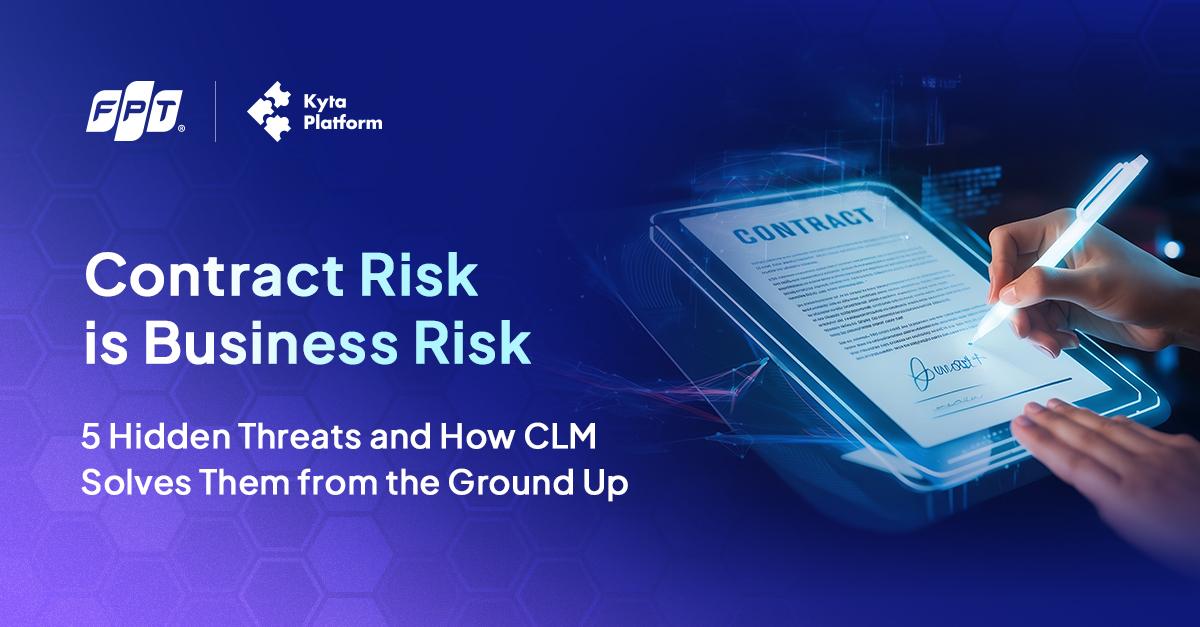5 Overlooked Contract Risks and How CLM Solves Them at the Root
Many businesses underestimate hidden contract risks. Learn how CLM helps eliminate them—from missed deadlines to compliance gaps—through smart automation and centralized control.
Nov 03 ,2025 - min readContracts are assets. But unmanaged, they become hidden liabilities
Contracts are the backbone of every business transaction whether it’s internal procurement, outsourced services, or strategic partnerships. Yet contracts are also one of the biggest sources of risk, because they’re often:
-
Treated as paperwork, not strategic workflows
-
Managed in silos across departments
Repeating the same small errors—errors that quietly cost businesses for years
This article doesn’t just say “go digital because it’s more convenient.” It dives into 5 legal and operational risks that many businesses face and how a robust Contract Lifecycle Management (CLM) system solves them at the root.

1. Deadline Risks: Auto-renewals, surprise terminations, forgotten obligations
Auto-renewed expenses that no one renegotiated. Warranty deadlines that pass unnoticed. Contracts suddenly terminated by partners only for internal teams to scramble and check the clauses afterward.
These aren’t deliberate mistakes. They happen because the system doesn’t remind—and no one is accountable end-to-end.
CLM Solution:
-
Automated alerts via email, dashboards, or system notifications
-
Clause-level metadata for tracking renewals and setting advance reminders
-
Centralized repository for all active and signed contracts—nothing gets lost in inboxes or folders
2. Language Risk: Unstandardized clauses and ambiguous responsibility
A phrase like “reasonable effort” may sound harmless but without a clear definition, it creates misunderstandings and legal loopholes. Custom clauses drafted without legal review can become repeat liabilities.
CLM Solution:
-
Clause playbooks embedded directly into the editor
AI suggestions to ensure only approved language is used -
Auto-flagging of risky or non-compliant terms during drafting
This doesn’t just reduce legal exposure but also scales safely when contract volume increases.
3. Version Control Risk: Unclear final version, unknown changes, missing audit trails
This issue often surfaces only after disputes arise, one side refers to a clause the other insists doesn’t exist. Wrong versions get signed. Legal can’t verify the official file.
CLM Solution:
-
End-to-end version history with timestamps and user tracking
-
Real-time collaboration with redlines and internal comments
-
Post-signature contracts are locked, with full audit logs preserved
Audit trails aren’t just for compliance, they’re your defense in disputes.

4. Compliance Risk: Contracts don’t match updated policies or regulations
Laws change. Internal policies evolve. But contract templates remain outdated especially when stored across different teams, with no centralized governance.
CLM Solution:
-
All contracts originate from a legally approved template library
-
Any edits are compared against the base template to detect deviations
-
Periodic reports audit all active contracts for compliance gaps
Maintaining compliance shouldn’t rely on manual oversight but it needs systemized controls.
5. Operational Risk: Revenue leakage, uncontrolled lifecycle costs
Many businesses don’t lose money from bad contracts but from poor contract execution:
-
Missed price adjustment clauses
-
Delayed approvals slowing collections
-
Manual processes inflating legal and admin costs
CLM Solution:
-
Workflow-based design—from initiation, drafting, approval to signature and archiving
-
Each step tracked with status, assignees, and timestamps
-
Unlimited user access enables cross-department collaboration without license bottlenecks
All the previously “invisible” costs now become visible and controllable.

Final Takeaway: Contracts Are Operational Assets and They Deserve Systematic Governance
Contract management isn’t just a legal department function. It’s a strategic link in the modern operating chain, impacting cash flow, growth velocity, and systemic risk control.
Kyta Platform goes beyond digitizing contracts. It standardizes how your organization prevents risks before they’re signed, not after problems emerge.
Frequently Asked Questions (FAQ)
What is CLM?
Contract Lifecycle Management is a system that oversees the entire contract lifecycle—from drafting and approval to signing, archiving, retrieval, and renewal.
Who should adopt CLM?
Organizations with multi-tier approval processes, large contract volumes, or strict regulatory obligations will benefit the most.
How is Kyta Platform different from traditional e-signature tools?
Kyta Platform goes beyond e-signatures. It manages the entire lifecycle—with approval workflows, clause tracking, real-time alerts, multi-level permissions, and legal-grade storage.
